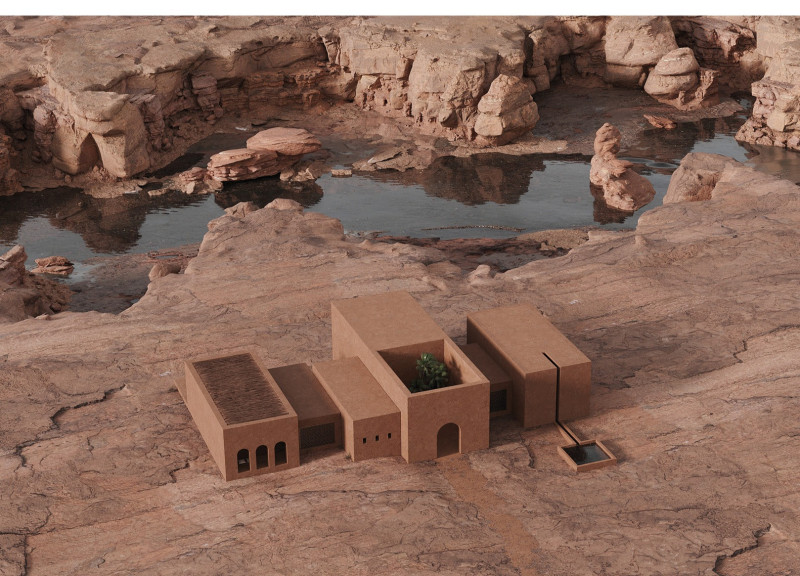5 key facts about this project
The Hospice is located on the edge of Ramon Crater in Israel's Negev desert. It serves as a space for quiet reflection and connection with nature. The design draws from the geological history of the area, which was shaped over millions of years. The project aims to blend in with its striking landscape while providing a functional facility for its visitors.
Design Approach
The building has an open design that minimizes barriers between inside and outside spaces. Instead of glass, it utilizes various openings that enhance the experience of the natural surroundings. The form of the structure resembles a simple shelter, its appearance reminiscent of ancient ruins. This design choice allows for a strong relationship between the architecture and the landscape.
Spatial Experience
Inside the Hospice, each room offers a different atmosphere. Variations in ceiling heights and the placement of openings create unique experiences of light and temperature. This thoughtful arrangement encourages users to engage with their environment and take moments for introspection. Visitors can appreciate the changing qualities of light throughout the day, creating a dynamic relationship with nature.
Material Selection
Rammed earth is the main material used in construction. This choice supports passive climate control, utilizing the natural properties of the earth to maintain comfortable temperatures. The use of rammed earth also connects the building to its geological context. The texture and color of the material reflect the surrounding landscape, adding to the overall aesthetic and sensory appeal.
Elemental Themes
The overall design maintains a minimalist aesthetic, focusing on the four elemental themes: earth, water, fire, and wind. These themes are explored through the sensory experiences offered by the building. With careful consideration of how light interacts within the space, the design encourages a sense of tranquility. The lack of artificial light further enhances the experience, allowing for remarkable stargazing opportunities at night.
In its simplicity and connection to the environment, the Hospice invites a deeper understanding of the relationship between architecture and nature. The design fosters reflection, making it a serene retreat in a remarkable geological setting.



















































